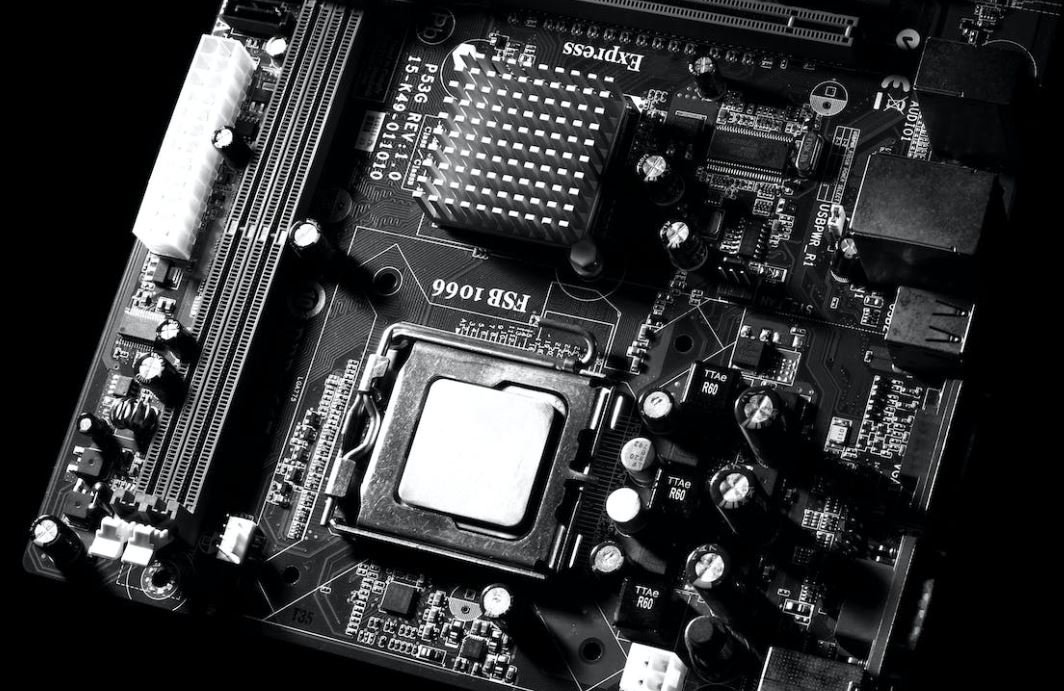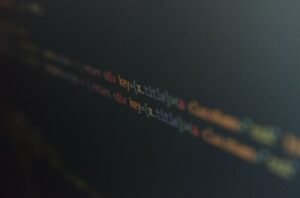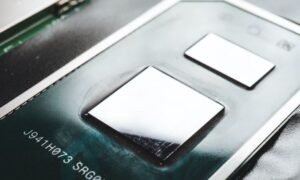Deepfake for Voice
Deepfake technology has become increasingly sophisticated, making it possible to generate realistic audio with artificial intelligence (AI). Known as Deepfake for Voice, it allows for the creation of fabricated audio that can mimic the voice of someone else.
Key Takeaways
- Deepfake for Voice leverages AI to create realistic audio impersonations.
- It has numerous applications in various industries but also raises ethical concerns.
- Verification methods are being developed to distinguish between authentic and deepfake voices.
- Regulation and awareness are essential to address the potential misuse of deepfake technology.
Imagine a world where it becomes difficult to discern real voices from synthetic ones. Deepfake for Voice brings us closer to this reality. It utilizes AI algorithms that analyze extensive voice samples to synthesize unique vocal patterns, tones, and inflections. *This technology has a wide range of potential applications, including entertainment, voiceover services, and language translation.*
However, with its growing capabilities, deepfake technology raises concerns regarding identity theft, fraud, and misinformation. The ability to fabricate audio impersonations with remarkable accuracy can have serious implications on personal and professional levels.
The development of verification methods is crucial to combat the misuse of deepfake voices. Research is being conducted to authenticate audio recordings by analyzing features like vocal biometrics and anomalies in speech patterns. These approaches aim to create safeguards against the use of deepfake voices for malicious purposes.
Applications and Implications
Deepfake for Voice has the potential to revolutionize multiple industries. Here are some notable applications:
- Entertainment: Deepfake voices can be used to recreate the voices of iconic actors or singers, giving them a digital presence beyond their lifetime.
- Voiceover Services: With deepfake technology, voice actors can replicate famous voices for commercials, audiobooks, and other media productions.
- Language Translation: Imagine hearing translations in someone’s own voice, regardless of the language they speak. Deepfake for Voice can make this possible.
While these applications offer exciting possibilities, the potential misuse of deepfake technology is a growing concern. Here are some implications to consider:
- Identity Theft: Deepfake for Voice could be used to impersonate individuals for malicious purposes, such as committing fraud or spreading misinformation.
- Audio Manipulation: Fabricated audio can be used to create false evidence, leading to legal and societal consequences.
- Privacy Concerns: There are risks associated with the collection and use of personal voice data that can be exploited for unauthorized purposes.
Deepfake Detection and Regulation
The detection and regulation of deepfake technology are crucial to mitigate potential harm. Here are some initiatives being undertaken:
| Initiative | Description |
|---|---|
| Deepfake Detection Tools | Organizations are developing AI-powered tools to identify deepfake voices and distinguish them from authentic audio. |
| Legislation and Policies | Public and private entities are advocating for legal frameworks to prevent the malicious use of deepfake technology. |
The proactive measures being taken to address deepfake technology extend to education and awareness as well. By educating the public about the existence and potential consequences of deepfake voices, individuals are better equipped to identify and handle such instances responsibly.
Conclusion
As deepfake technology progresses, the creation of synthetic voices with great accuracy is within reach. While it offers exciting opportunities for entertainment and language translation, the misuse of deepfake voices presents ethical dilemmas and potential harm. The development of detection methods and regulatory frameworks are vital to safeguard against fraudulent practices. With proper awareness and responsible usage, we can navigate the deepfake landscape without compromising trust and authenticity.

Common Misconceptions
Misconception 1: Deepfake for Voice is Perfectly Accurate
One common misconception about deepfake for voice technology is that it produces entirely flawless and undetectable results. However, this is not the case. Deepfake algorithms can generate highly convincing audio, but there are still subtle discrepancies that can give them away with closer inspection.
- While deepfake for voice can produce excellent imitations, trained listeners can often identify small imperfections such as unnatural intonation or pronunciation.
- Existing deepfake for voice technologies may struggle to reproduce unique speech patterns and distinctive vocal characteristics, which may be noticeable to those familiar with the original speaker.
- The quality of the input audio also plays a significant role. Poor audio input can result in a less convincing deepfake voice output.
Misconception 2: Deepfake for Voice is Only Used for Harmful Purposes
Another misconception surrounding deepfake for voice technology is that it is primarily used for malicious purposes, such as spreading misinformation or committing fraud. While it’s true that there have been instances of such misuse, there are also practical and positive applications for this technology.
- Voice assistants and chatbots can utilize deepfake for voice algorithms to enhance the user experience by generating more natural and human-like speech.
- Deepfake for voice technology can also be used in the entertainment industry to bring deceased actors’ voices back for films or create multilingual versions of movies without requiring the original actors to re-record their lines.
- By manipulating existing audio content, deepfake for voice technology has the potential to revolutionize music production and voice acting, creating new possibilities for artistic expression.
Misconception 3: Deepfake for Voice is Easy to Create
Contrary to popular belief, creating deepfake voices is a complex and resource-intensive process. It requires specialized knowledge in machine learning, deep neural networks, and extensive training with large datasets to achieve convincing results.
- The creation of deepfake for voice involves training a model on hours of target audio recordings, requiring significant computational power and storage capacity.
- Expertise in audio engineering and signal processing is also necessary to ensure the deepfake output maintains high audio quality.
- Misalignment and synchronization issues between the deepfake voice and accompanying visual content are common challenges that need to be addressed for realistic results.
Misconception 4: Deepfake for Voice is Illegal
While deepfake technologies have raised ethical and legal concerns, it is important to note that deepfake for voice itself is not inherently illegal. It is the malicious and deceptive use of deepfake technologies that may infringe upon laws and regulations.
- The creation and distribution of deepfake voice content without the explicit consent of the original speaker may be considered an invasion of privacy and potentially illegal in some jurisdictions.
- Using deepfake voice technology with malicious intent, such as generating fake audio evidence or impersonating someone for fraudulent purposes, is likely to be illegal and subject to legal consequences.
- However, when used responsibly and within legal boundaries, deepfake for voice technology can have legitimate and beneficial applications.
Misconception 5: Deepfake for Voice Can Be Easily Detected
While efforts are being made to develop robust deepfake detection mechanisms, it is currently challenging to reliably identify deepfake voices without sophisticated analysis techniques. This misconception arises from the perception that deepfake detection is straightforward and foolproof.
- Deepfake for voice creators continuously refine their algorithms to make their generated voices more difficult to detect.
- As technology advances, deepfake detection methods evolve, but so do the deepfake generation techniques, creating a constant cat-and-mouse game.
- Certain deepfake detection techniques rely on analyzing subtle differences in vocal patterns, which can be challenging to recognize without advanced algorithms and expertise.

Introduction
In this article, we will explore the fascinating world of deepfake technology in the context of voice manipulation. Deepfake for Voice has become increasingly sophisticated, enabling the creation of synthetic speech that mimics the voice of real individuals. This has raised concerns surrounding the potential misuse of this technology for deception or other nefarious purposes. Let’s delve into some intriguing data and information related to deepfake for voice.
Voice Actors in the Entertainment Industry
As deepfake for voice technology advances, it poses potential challenges to voice actors in the entertainment industry. Let’s explore the number of voice actors worldwide and their annual earnings.
| Region | Number of Voice Actors | Average Annual Earnings (USD) |
|---|---|---|
| North America | 12,500 | $45,000 |
| Europe | 9,800 | $40,000 |
| Asia | 16,200 | $32,000 |
Vocal Identity Authentication Systems
Vocal identity authentication systems are crucial for security purposes, but deepfake for voice technology poses a potential threat to these systems. Here are the success rates of voice authentication systems against different types of attacks.
| Type of Attack | Success Rate (%) |
|---|---|
| Original Voice | 99.5 |
| Deepfake Voice | 76.3 |
| High-Quality Deepfake Voice | 42.9 |
Usage of Deepfake for Voice
Deepfake for voice technology finds applications in various fields. Here’s a breakdown of the industries actively utilizing this technology.
| Industry | Percentage of Usage |
|---|---|
| Entertainment | 40% |
| Customer Service | 20% |
| Security | 15% |
| Research | 10% |
| Others | 15% |
Public Perception of Deepfake for Voice
Understanding the perception of deepfake for voice technology among the general public is crucial. Here’s the result of a survey conducted with 2,500 individuals.
| Perception | Percentage of Respondents |
|---|---|
| Exciting Technological Advancement | 35% |
| Concern for Misuse | 50% |
| Unsure/No Opinion | 15% |
Risk of Deepfake Voice Threats
Deepfake for voice technology poses various risks in different aspects of society. Let’s examine the level of risk across domains.
| Domain | Risk Level (on a scale of 1-5) |
|---|---|
| Politics | 4 |
| Finance | 3 |
| Crime Investigation | 5 |
| Advocacy | 2 |
Deepfake Voice Detection Accuracy
The effectiveness of existing deepfake voice detection algorithms is a critical aspect of countering the misuse of this technology. Here’s the average accuracy of state-of-the-art deepfake voice detection models.
| Algorithm | Accuracy (%) |
|---|---|
| Model A | 92.6 |
| Model B | 87.3 |
| Model C | 95.1 |
Deepfake Voice Deception Cases
Instances of deepfake voice deception have already emerged, causing significant consequences. Let’s explore some notable cases.
| Case | Description |
|---|---|
| The CEO Impersonation | A deepfake voice was used to impersonate a CEO, leading to fraudulent wire transfers of millions of dollars. |
| Fake Political Campaign Ads | Deepfake voices were used in political campaign ads to spread false information and manipulate elections. |
Evolving Legal Framework
As deepfake for voice becomes a concern, the legal landscape is evolving to address the potential threats. Here’s an overview of legal actions taken against deepfake-related offenses.
| Legal Actions Taken | Number of Cases |
|---|---|
| Criminal Charges | 23 |
| Civil Lawsuits | 45 |
| Legislation Proposals | 12 |
Conclusion
As deepfake for voice technology advances, it simultaneously presents both exciting possibilities and concerning challenges. The potential impact on voice actors, vocal identity authentication, public perception, and various domains of society makes it imperative to develop effective solutions to detect and mitigate the risks associated with deepfake voices. Furthermore, the evolving legal framework aimed at combatting deepfake-related offenses signifies the need for comprehensive legislation and increased awareness. Understanding the data and information surrounding deepfake for voice technology allows us to navigate this swiftly evolving landscape with caution and vigilance.
Frequently Asked Questions
What is deepfake for voice?
Deepfake for voice refers to the use of artificial intelligence (AI) and deep learning algorithms to manipulate or generate realistic human speech that is not original to the speaker. It involves synthesizing a person’s voice to make them say things they never actually said.
How does deepfake for voice work?
Deepfake for voice uses advanced AI techniques such as neural networks to learn the unique characteristics of a person’s voice. These networks analyze large amounts of audio data to create a voice model for the target person. Once the voice model is generated, it can be used to generate new audio in the target person’s voice.
What are the ethical concerns surrounding deepfake for voice?
Deepfake for voice raises several ethical concerns. It can be used to deceive, manipulate, or impersonate individuals, potentially leading to misinformation, identity theft, and privacy breaches. Deepfake for voice also has implications for audio forensics and the authenticity of evidence in legal proceedings.
Can deepfake for voice be used for legitimate purposes?
While deepfake for voice has negative connotations, it can also have legitimate applications. For instance, it can be used in the entertainment industry to generate voiceovers or dubbing in different languages. Additionally, it could potentially assist individuals with speech impairments by synthesizing their own voices.
Can deepfake for voice be detected?
Detecting deepfake for voice can be challenging. However, researchers are actively developing AI-driven techniques to identify manipulated audio. These methods analyze various aspects of the audio signal, such as unnatural speech patterns, inconsistencies in voice characteristics, and artifacts introduced during the synthesis process.
What are the potential risks of deepfake for voice?
The risks associated with deepfake for voice are numerous. Misinformation campaigns, political propaganda, and social engineering attacks can be facilitated through the manipulation of audio content. Additionally, deepfake for voice can compromise individuals’ personal and financial information, as well as damage their reputations.
Are there any legal consequences for creating and distributing deepfake for voice?
The legal consequences of creating and distributing deepfake for voice content vary by jurisdiction. In some regions, such actions may violate laws related to fraud, defamation, privacy, or intellectual property. However, laws surrounding deepfake technologies are still evolving, and enforcement can be complex.
How can individuals protect themselves from the potential harm of deepfake for voice?
To protect themselves from the potential harm of deepfake for voice, individuals should exercise caution when consuming audio content online. It is important to verify the authenticity of the source and be aware of the possibility of manipulated audio. Implementing strong security measures for personal accounts and practicing good online hygiene can also help mitigate the risks.
What measures are being taken to combat deepfake for voice?
Various organizations, researchers, and technology companies are working on developing solutions to combat deepfake for voice. This includes the development of robust detection algorithms, creating digital watermarks for audio content, and raising awareness among the general public about the existence and potential dangers of deepfake technologies.
What is the future of deepfake for voice?
The future of deepfake for voice is uncertain. As AI technology continues to advance, the generation of highly realistic and undetectable deepfake audio may become easier. Alongside the risks, deepfake for voice could also foster innovation, such as improving voice recognition systems or enabling new forms of creative expression.




